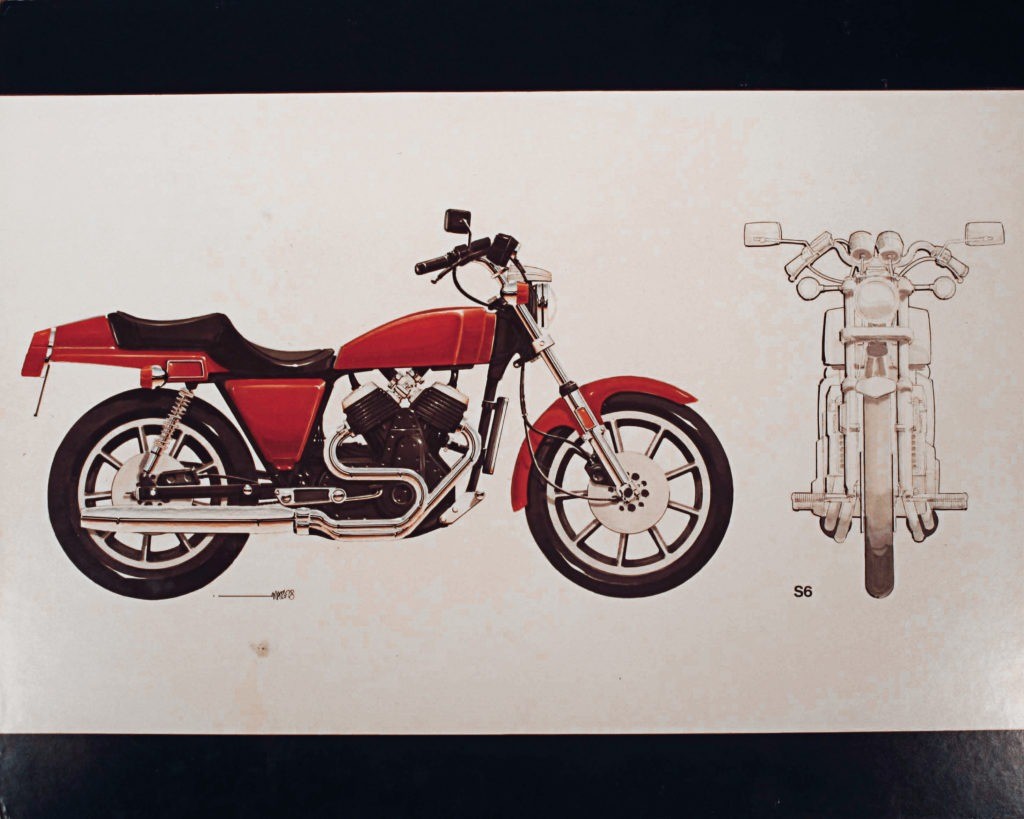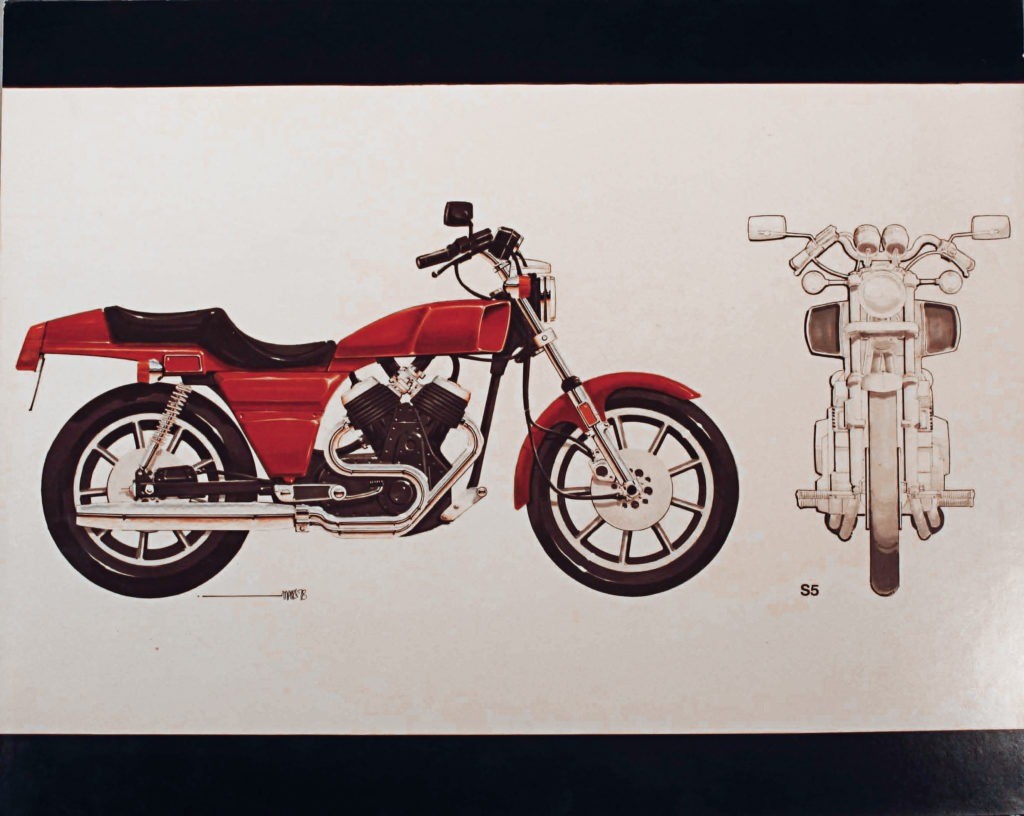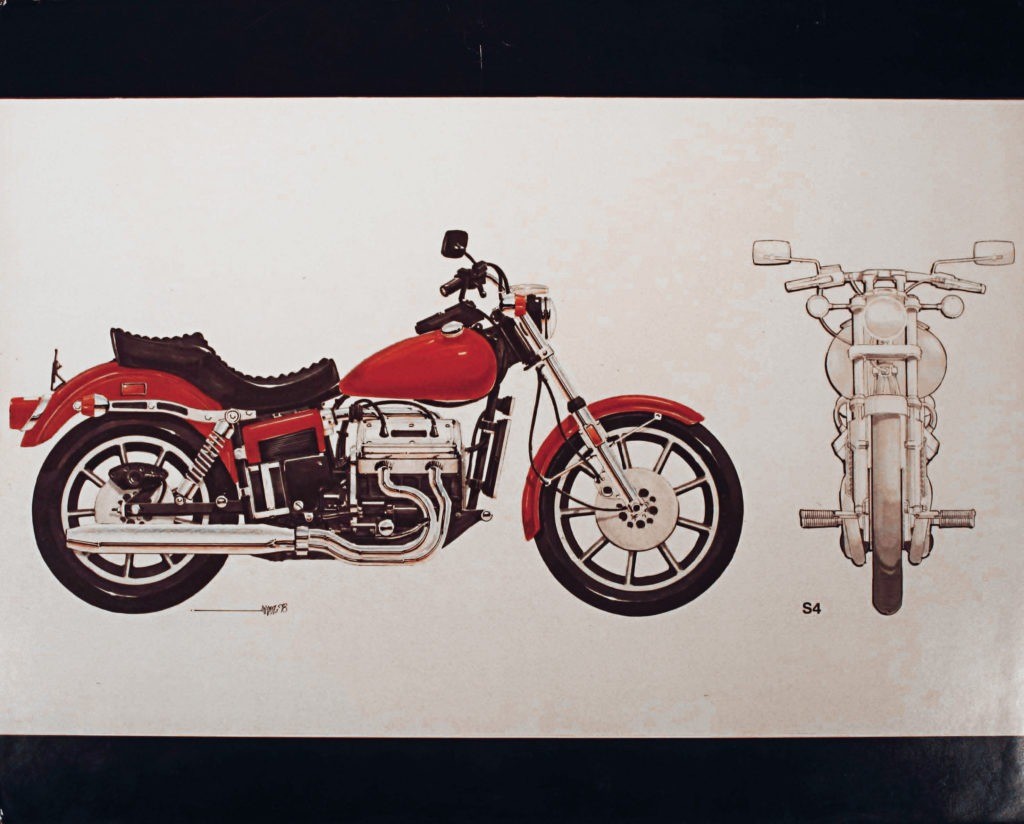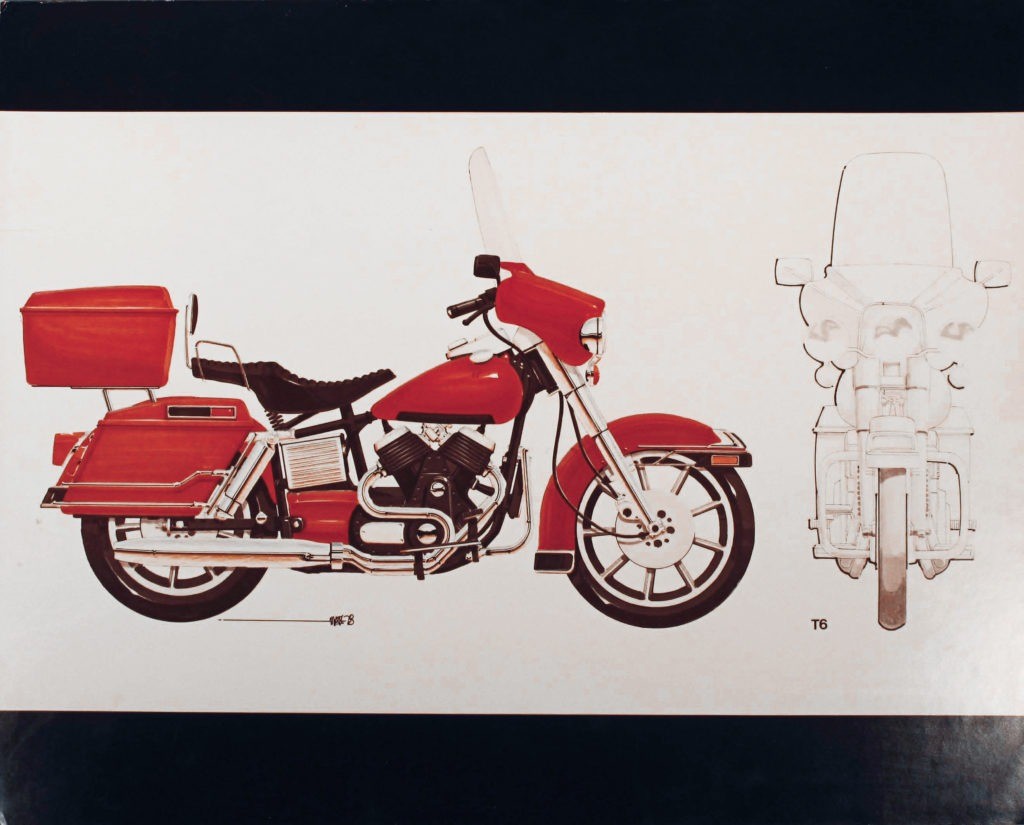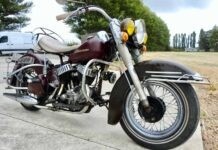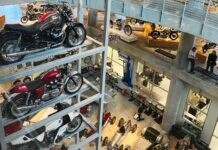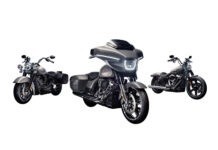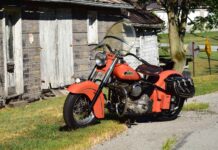
Harley-Davidson’s stillborn Nova models of 1980 were advanced and flashy, but building them would likely have killed the Motor Co. Instead, Milwaukee stuck with what it knew, launched the Evo and let the boomer wave carry them to nirvana.
Words by Mitch Boehm
Photos courtesy of Harley-Davidson and American Rider
Harley-Davidson’s Nova project of the late ’70s and early ’80s is one of the most epic what if stories in all of motorcycling. Despite spending millions of development dollars over the course of nearly five years, Milwaukee never did green-light the Nova bikes for production – and the debate about how they would have sold and affected the Motor Company continues to this day.
Whether you remember the Nova project or not (some will, many won’t), most folks do remember the time period, which for the Motor Company was transitional, topsy-turvy and filled with trepidation. While Japan Inc. – which had launched American motorcycling into hyperspace during the ’60s and ’70s – was poised to embark on a pell-mell techno rush that would soon include liquid-cooled engines, monoshock suspension, perimeter frames, 16-inch wheels, 100-plus horsepower engines, turbocharging and 11-second quarter mile times, all of it meshed with lots of memorable styling, Harley-Davidson struggled with the leaky, low-tech and low-performance twins (the launched-in-’66 Shovelhead and Ironhead Sportster), poor build quality and reliability, and, at times, utterly clueless AMF (American Machine and Foundry) management, which pushed Harley to build more motorcycles than it could reliably build.
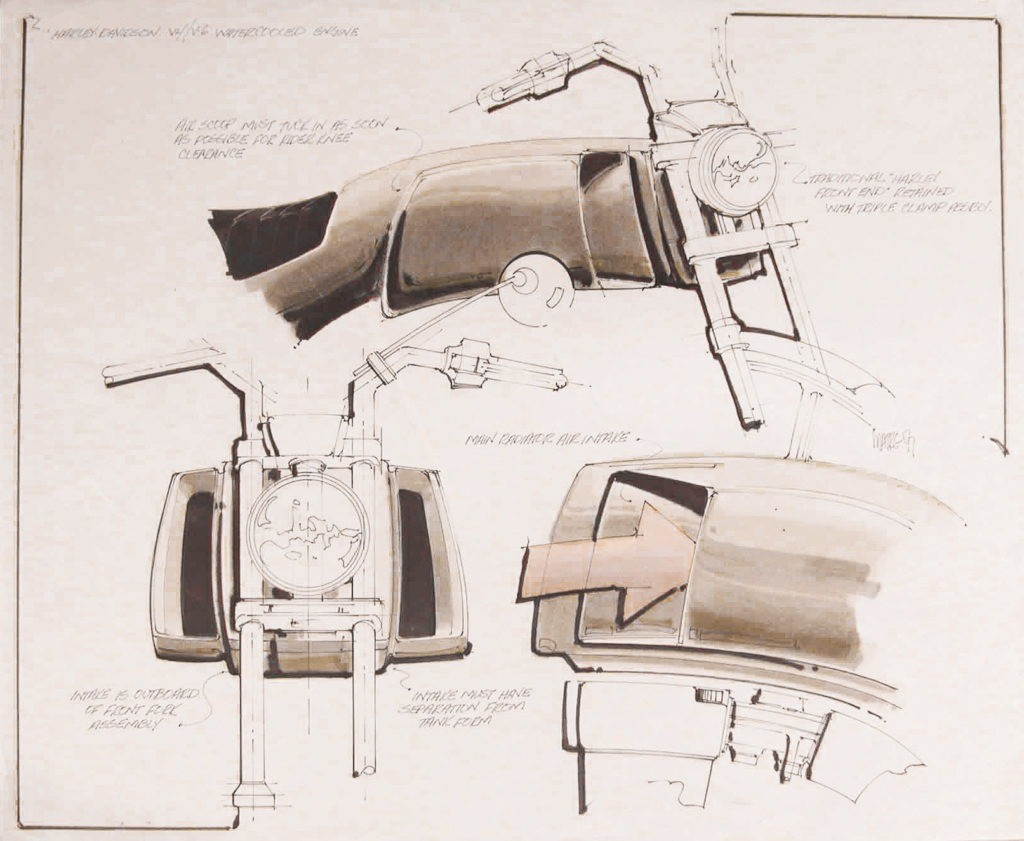
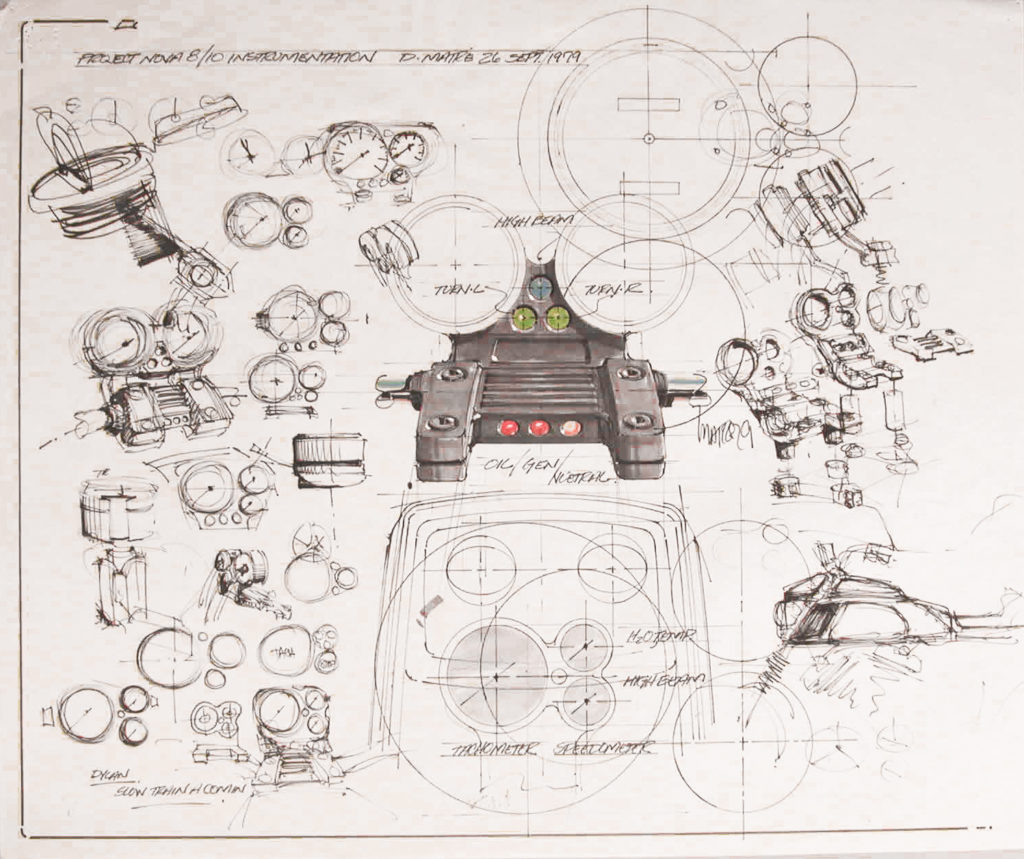
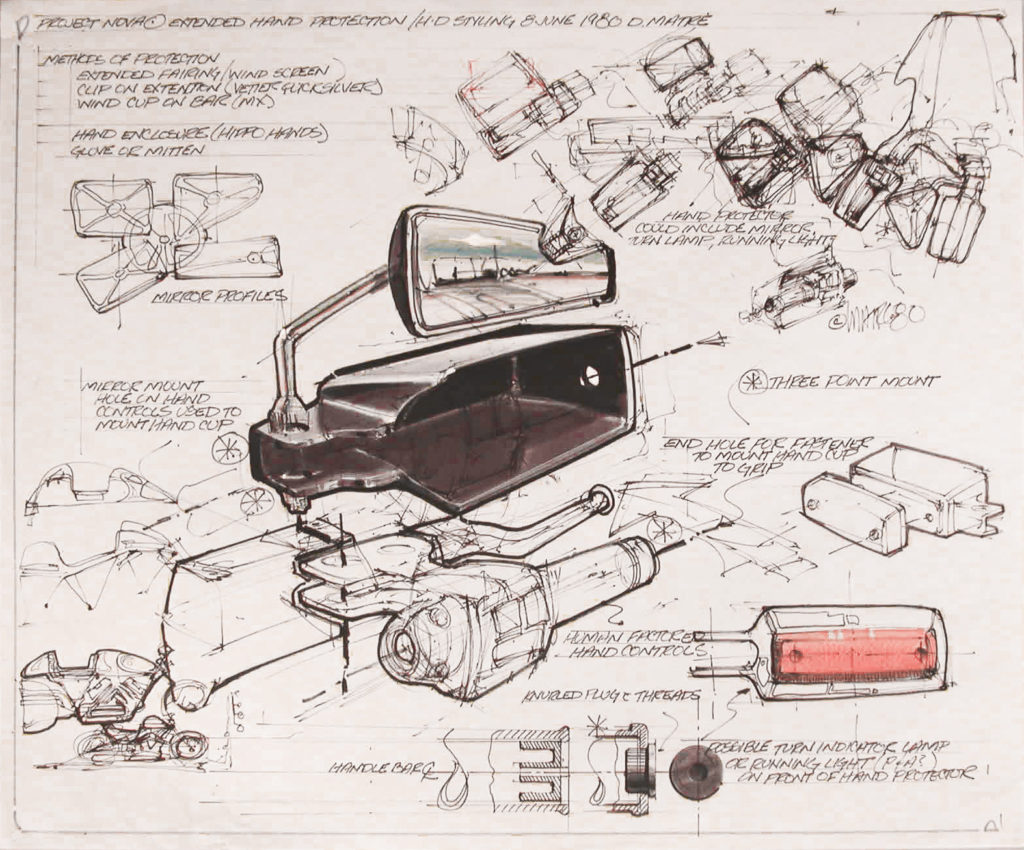
Those fourteen letters on the fuel tank still meant a lot to a lot of people, but the engineering, design and hardware surrounding those letters left something to be desired – especially with reliable, affordable and performance-heavy Japanese bikes available en masse just down the street. Milwaukee’s bikes looked great, but performance and quality simply didn’t back up the aesthetics.
Two gentlemen not part of AMF’s cadre of the clueless – Jeff Bleustein, hired in the early 1970s, and Vaughn Beals, who joined the Motor Co. in ’76 – realized Milwaukee’s predicament and moved to brainstorm a fresh direction in 1976 via a series of meetings at North Carolina’s Pinehurst golf resort. There, Harley-Davidson execs charted a bold and ambitious two-pronged course they felt would keep the company viable and appeal to two very different and important groups: traditional Harley customers who understood the brand and the pull of its history, and more performance- and tech-centered enthusiasts, many of which had been weaned on metric machinery – and few of which had ever considered a product from Milwaukee.
The so-called Pinehurst Plan comprised an entirely new V-twin (which would become the Evolution engine in ’83) for the former group, along with a range of liquid-cooled, multi-cylindered engines from 500 to 1000cc powering a lineup of more modern machines for the second group. This latter effort was the Nova project, designed primarily to expand Harley’s potential owner base during the 1980s and blunt the coming wave of tech-heavy motorcycles from Honda, Kawasaki, Suzuki and Yamaha that Bleustein and Beals (and others at Harley, including AMF president and motorcycle enthusiast Rodney Gott) knew in their bones was coming. (And boy did they come!)
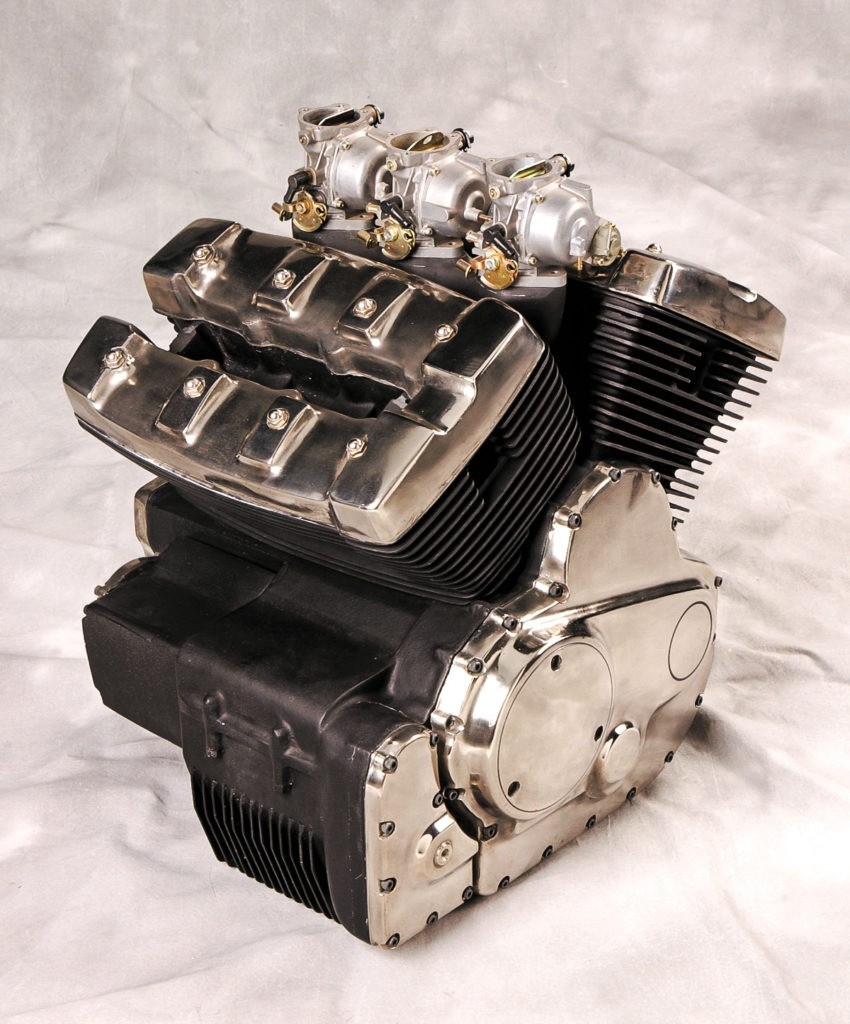
But this was still the late 1970s. Uncertainly prevailed. The economy was crap. Fuel shortages were the rule. Layoffs were rampant. We listened to Jimmy Carter disparage Americans’ ways and offer government-centric solutions to all our problems in his infamous ‘malaise’ speech… and then radicals took American hostages in Iran in late ’79. It was a troubled time in many ways.
Still, Harley’s dual-track approach seemed solid. The company would be hedging its bets, not locking into a single genre, and potentially doubling the size of its market, much the way Japan Inc. did by covering all the two-wheeled bases, from minibikes to CB750s and Z1s and everything in between. Given the uncertainty and angst of the times, a bit of technical diversification seemed smart – at least on paper.
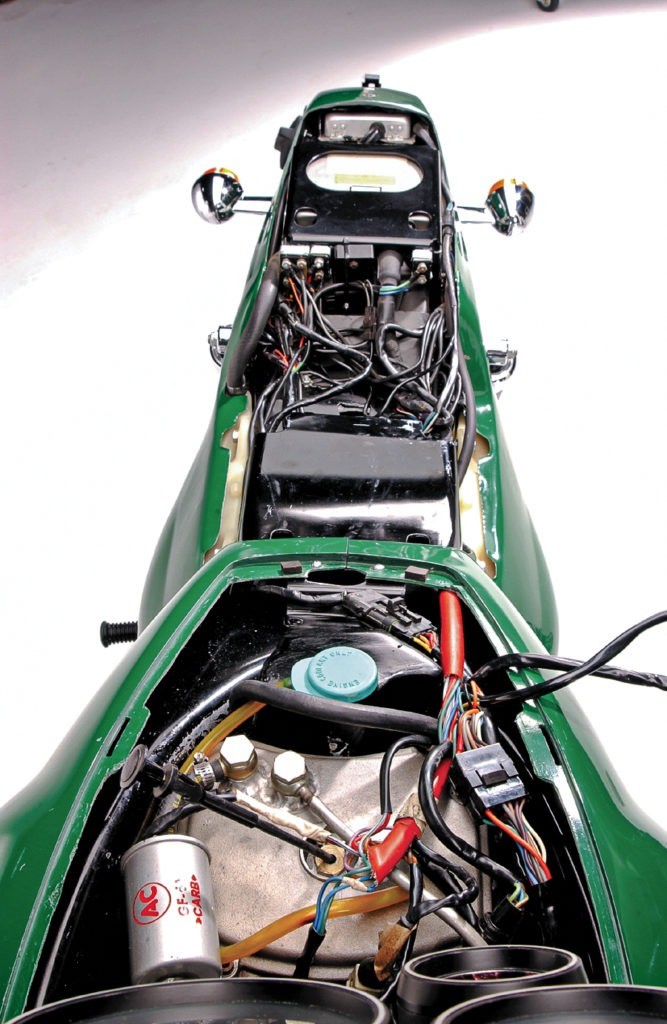

Development of the Nova and Evo projects began soon after AMF chieftains approved the Pinehurst Plan, all with plenty of financial support from AMF. “You told AMF what you wanted and you got it,” Beals told author Darwin Holmstrom for his Harley-Davidson: The Complete History book. “They invested in major upgrades at Harley and let us hire lots of people.”
For Nova, Harley contracted Porsche to provide expertise on various elements of high-performance liquid-cooled engine design, and the Germans were happy to oblige. (That partnership would be rekindled in the early 2000s for V-Rod development.) Chassis and drivetrain development would be handled in Milwaukee. One of the more interesting decisions was the Nova’s patented underseat radiator design, dictated largely by Willie G’s styling team, which did not want an ugly and square radiator mucking up the look of the front of the bike.

But as 1980 was about to dawn, Big Change drifted into Milwaukee off chilly Lake Michigan like a frozen winter fog, and it would affect the Motor Company in incalculable ways in the coming decades. AMF chief Rodney Gott retired and was replaced by W. Thomas York, an accountant with no motorcycle experience and very different ideas on how to scale AMF’s business.
“It got harder and harder to get money out of AMF,” Beals told Holmstrom. “York was a bean counter and had hired [an outside] firm to develop a strategic plan. They convinced him AMF should be half industrial and half leisure. At the time, AMF was about two-thirds leisure. [Harley was part of that leisure group. Ed.] He tried to get to 50/50 by acquisition, leaving no cash. At the time we were one of 40 companies in AMF, but we brought in one-fifth of the revenue.”
Ex-Harley employee Buzz Buzzelli, Editor of our sister publication American Rider, explained things this way in the magazine’s August 2002 issue: “York ordered the expansion of the industrial side, and financed it with profits from the leisure side. Under this plan, Harley-Davidson, AMF’s largest profit generator, would become the cash cow, milked of capital to feed other business interests. The Nova project,” Buzzelli added, “considered expensive and risky, fell victim to the bottom line, and was terminated.”
“When York shut off the money,” Beals said, “I knew we were gonna die and take AMF with us.”
Beals loved the company and felt the Nova project was important, so he proposed to York that AMF get to 50/50 by selling companies (including Harley-Davidson), not acquiring more. York was intrigued, which gave Beals the flexibility to put together a plan in which he and a handful of company execs (thirteen total) would buy the company. The group needed to pull together a $1 million down payment to satisfy potential lenders, which wasn’t easy. But they somehow found the cash, and in June of ’81 the deal was finalized to the tune of just over $80 million.
The so-called ‘Gang of 13’ staged a celebratory ride from Harley’s York, PA plant to Milwaukee to celebrate its new independence, but as Holmstrom writes, “the group was apprehensive because they knew the reality that awaited them in Milwaukee. They were obscenely in debt, the company’s reputation was in tatters, the country was in recession, the company and its dealers were already overstocked with motorcycles they couldn’t sell, and the motorcycle market was in a death spiral.”

Beals and company knew they needed to create new products (and be more efficient, and save money, and fix a host of other problems) if the company was to avoid its own death spiral. But new motorcycles cost big money, and money was in short supply given the company’s debt situation. So Harley’s options boiled down to these: Either continue developing the Evolution V-twin, or build the Nova. They could not afford to do both, as much as they wanted to. As Buzzelli wrote, “The Nova was the long-range hope, the 10-year promise. But air-cooled twins promised the most immediate cash flow. And so the Nova died yet another death.”
Of course, we all know what was about to happen…sales, brand and financial success of simply mammoth proportion, from the late ’80s to the great economic downturn of 2008. Several elements contributed.
First, despite terrible sales in ’81, ’82 and ’83, which were below the lending agreement minimums and which allowed the banks to call their loans, Harley somehow survived foreclosure. Secondly, the reliable, more powerful and no-longer-leaky Evolution Big Twin debuted in late ’83, and in ’84 and ’85 sales improved, helped even more by the launch of an Evo-engined Sportster in ’85. Next, new bikes appeared, including the soon-to-be-best-selling Softail models, especially the Heritage version. And finally, as the ’80s turned into the ’90s, baby boomers returned to the market in droves, many urged on by their youthful two-wheeled experiences and simmering desire to own a certain motorcycle with those fourteen letters on the fuel tank. A wave of Reagan-era nationalism didn’t hurt, either. By the mid-’90s, Harley’s sales, brand image and financial strength were enormous and all-powerful.
All of which proves that, from a 20-20 hindsight perspective from the year 2020, Harley made exactly the right move in choosing to build the Evo – and eschew the techy-but-untested Nova.
But what if Milwaukee had built the Nova instead? It’s a fascinating question. Many a pundit – then, over the last thirty-some years, and even now – has waxed poetic about the possibility, with most feeling that it was an opportunity missed, a chance to have stuck it to the Japanese, the end result of which would’ve set Milwaukee up for industry dominance in all sectors, not simply the heritage/custom/traditional sector Harley has traditionally dominated.
I beg to differ, and here’s why.
First, even without Evo development, Harley was seriously cash poor at the time, and developing higher-tech motorcycles, especially a handful of models with different engine displacements and cylinder configurations (V-twins, V-fours and even a V-six were proposed for the Nova line), is mondo expensive, much more so than steel-framed, air-cooled twins. Getting something wrong can mean quick death for a model, and if it’s a key model, as these would have been, the results can be devastating.
Secondly, this high-tech direction was relatively new to H-D engineering despite Porsche’s assistance, and doing all the things you need to do well enough to battle the technically excellent Japanese would have been monumentally difficult. Japan, remember, had near-unlimited development funds, and was on the verge of introducing world-class chassis and engine technology gleaned from its exposure to Grand Prix and Superbike racing around the world. Harley had basically zero experience here, and its Nova racebike prototype, with its old-school/’70s chassis design, proves the point.

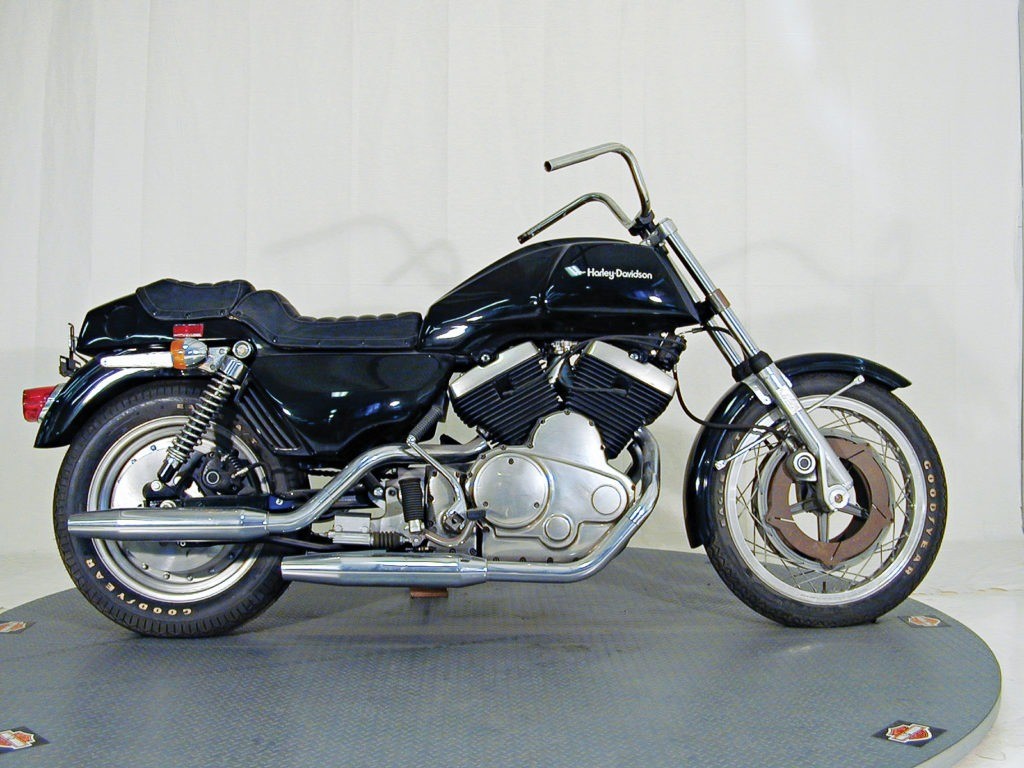

Third is exactly that: Massive competition from Japan Inc., which was about to roll out handfuls of superbly engineered, good looking, fine handling, affordable and wickedly fast motorcycles in sport, sport touring, touring and custom guises during the 1980s. Anyone think that woulda been do-able for Harley in the challenging economy of the middle and late 1980s?
Finally, despite help from Willie G’s styling group, the handful of Nova prototypes in existence are – let’s be honest here, since few have been over the years – not aesthetic successes. Regardless of where you stand, the Novas were not going to rival motorcycles like the Yamaha V-Max, Suzuki GS1150, Honda Magnas or Sabres, Kawasaki Concours or Eliminators, or any number of Japanese streetbikes, for looks or attitude. Sure, Harley-Davidson could have re-styled the Novas once the verdicts were in, but that would have taken time and money, two things Milwaukee had very little of at the time.
So where does that leave us? It’s this author’s opinion that doing the Novas and not the Evo would likely have killed the Motor Co. Ed Burke, a motorcycle industry Hall of Famer who ran Yamaha product-planning for decades and who was responsible for some of the most successful sport, touring and custom motorcycles in history, agrees. “They hit the nail on the head with the Evo,” Burke told me, “and grabbed many of the customers we and Honda had captured in the ’60s and ’70s. They also put the social value back into motorcycling with the HOG thing. Just brilliant. But I believe strongly that doing the Nova and not the Evo would absolutely have killed the company. Heck, even we had a tough time competing in the 1980s; it was a difficult market, for sure. If I remember correctly, Honda had 12 or 15 all-new models in 1983 alone; it was war back then!”
So in the end, Harley-Davidson chose the right path, and history proves it. The decision may have been largely a financial one, but the old adage of sticking with what you know and doing it right certainly paid dividends – for the Company as well as for Harley-Davidson fans.
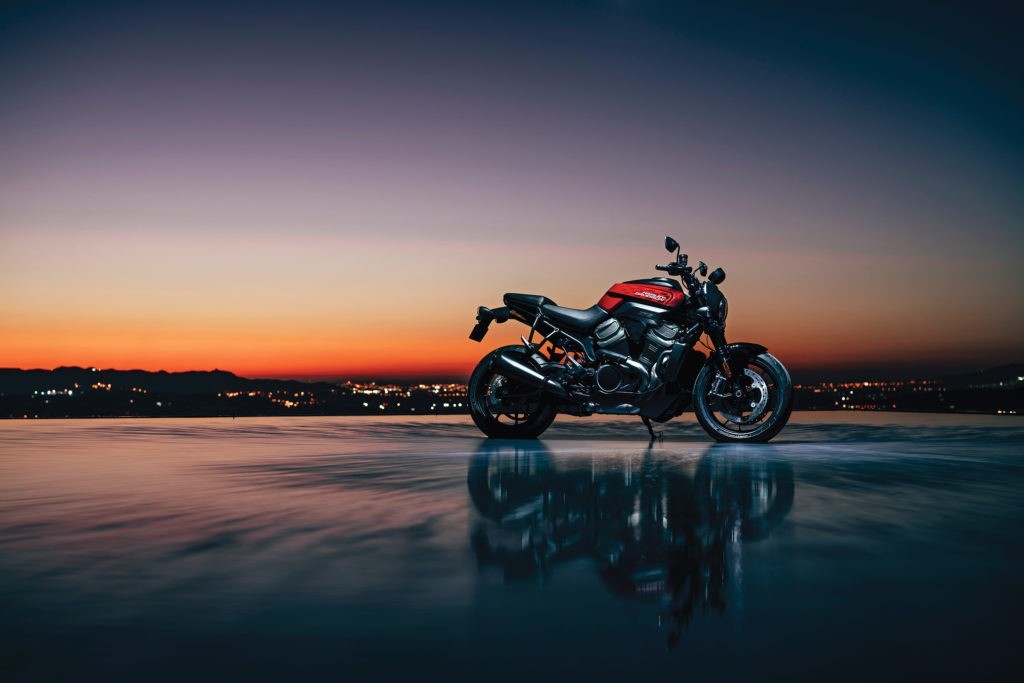
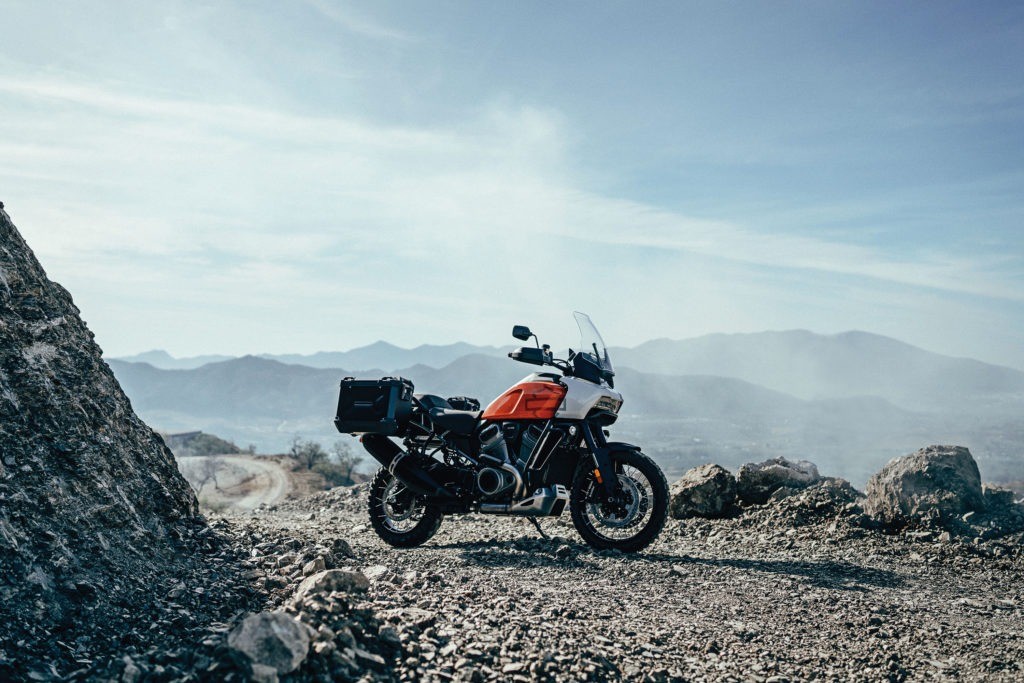
What’s so interesting – and certainly ironic – about all this are the parallels with today. Once again, just as in the middle and late 1970s, Harley-Davidson finds itself needing to expand its reach and scope to younger, non-traditional buyers, and it’s doing so in ways that very much mirror what the Pinehurst Plan called for – high-tech, liquid-cooled and clearly non-traditional motorcycles like the Bronx streetfighter and Pan America adventure tourer. This time, however, the company has the financial might to do that job – along with updating its V-twin lineup and also developing a range of EVs – the right way.
As Yogi Berra quipped a long, long time ago, “it’s like déjà vu all over again.” Indeed.
